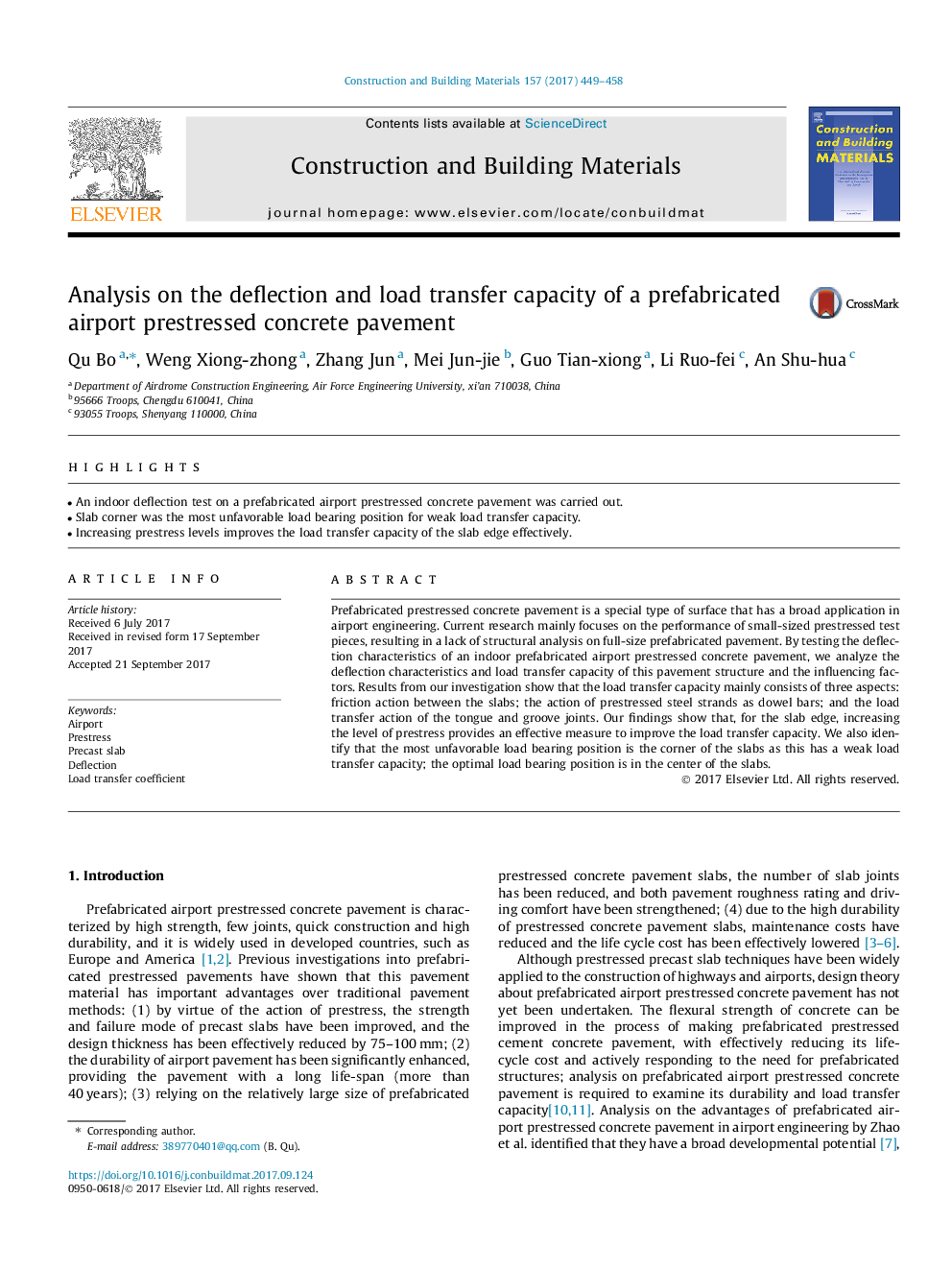| Article ID | Journal | Published Year | Pages | File Type |
|---|---|---|---|---|
| 4912887 | Construction and Building Materials | 2017 | 10 Pages |
Abstract
Prefabricated prestressed concrete pavement is a special type of surface that has a broad application in airport engineering. Current research mainly focuses on the performance of small-sized prestressed test pieces, resulting in a lack of structural analysis on full-size prefabricated pavement. By testing the deflection characteristics of an indoor prefabricated airport prestressed concrete pavement, we analyze the deflection characteristics and load transfer capacity of this pavement structure and the influencing factors. Results from our investigation show that the load transfer capacity mainly consists of three aspects: friction action between the slabs; the action of prestressed steel strands as dowel bars; and the load transfer action of the tongue and groove joints. Our findings show that, for the slab edge, increasing the level of prestress provides an effective measure to improve the load transfer capacity. We also identify that the most unfavorable load bearing position is the corner of the slabs as this has a weak load transfer capacity; the optimal load bearing position is in the center of the slabs.
Keywords
Related Topics
Physical Sciences and Engineering
Engineering
Civil and Structural Engineering
Authors
Qu Bo, Weng Xiong-zhong, Zhang Jun, Mei Jun-jie, Guo Tian-xiong, Li Ruo-fei, An Shu-hua,
